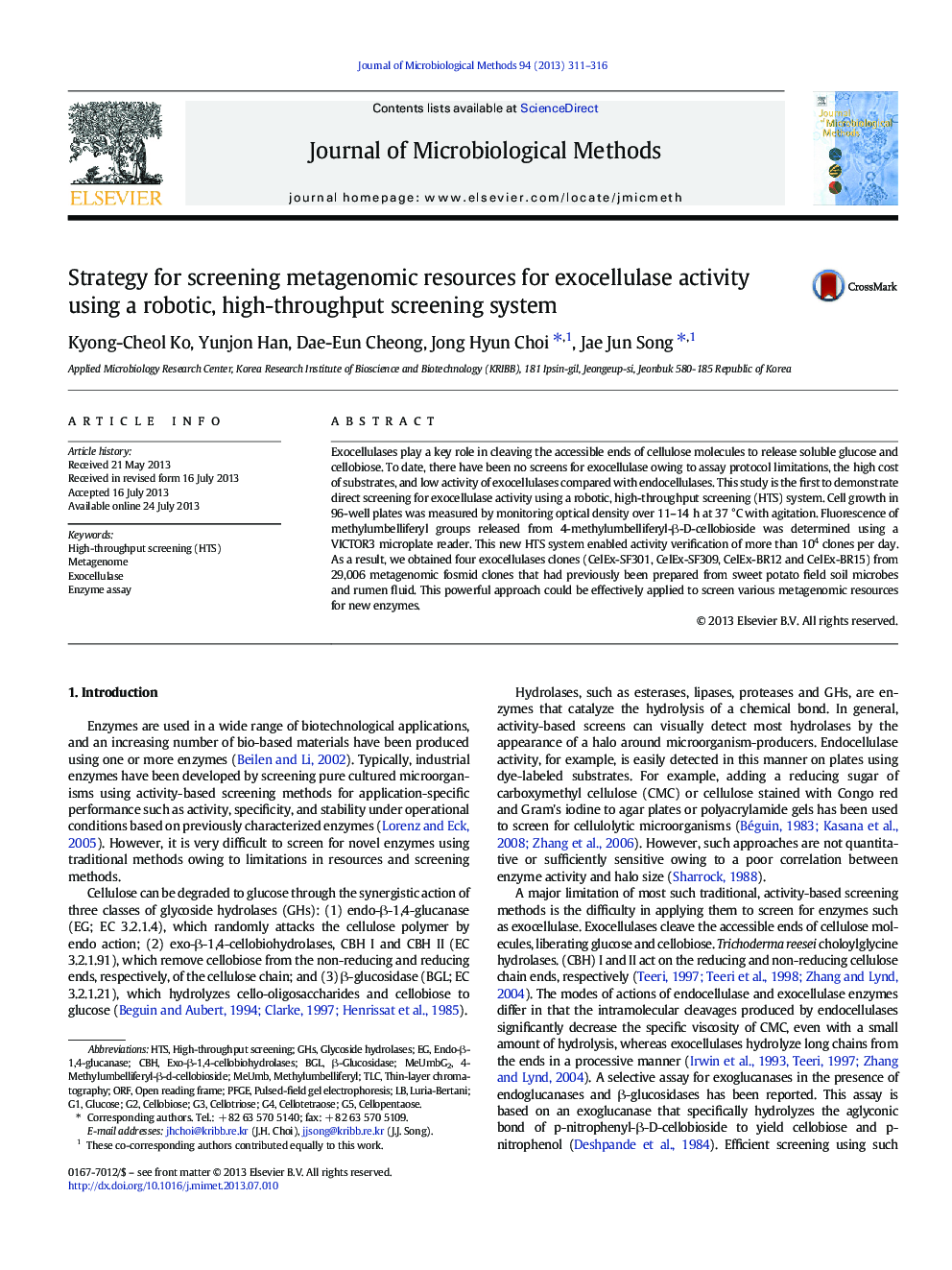| Article ID | Journal | Published Year | Pages | File Type |
|---|---|---|---|---|
| 10890645 | Journal of Microbiological Methods | 2013 | 6 Pages |
Abstract
Exocellulases play a key role in cleaving the accessible ends of cellulose molecules to release soluble glucose and cellobiose. To date, there have been no screens for exocellulase owing to assay protocol limitations, the high cost of substrates, and low activity of exocellulases compared with endocellulases. This study is the first to demonstrate direct screening for exocellulase activity using a robotic, high-throughput screening (HTS) system. Cell growth in 96-well plates was measured by monitoring optical density over 11-14 h at 37 °C with agitation. Fluorescence of methylumbelliferyl groups released from 4-methylumbelliferyl-β-D-cellobioside was determined using a VICTOR3 microplate reader. This new HTS system enabled activity verification of more than 104 clones per day. As a result, we obtained four exocellulases clones (CelEx-SF301, CelEx-SF309, CelEx-BR12 and CelEx-BR15) from 29,006 metagenomic fosmid clones that had previously been prepared from sweet potato field soil microbes and rumen fluid. This powerful approach could be effectively applied to screen various metagenomic resources for new enzymes.
Keywords
Related Topics
Life Sciences
Biochemistry, Genetics and Molecular Biology
Biotechnology
Authors
Kyong-Cheol Ko, Yunjon Han, Dae-Eun Cheong, Jong Hyun Choi, Jae Jun Song,
